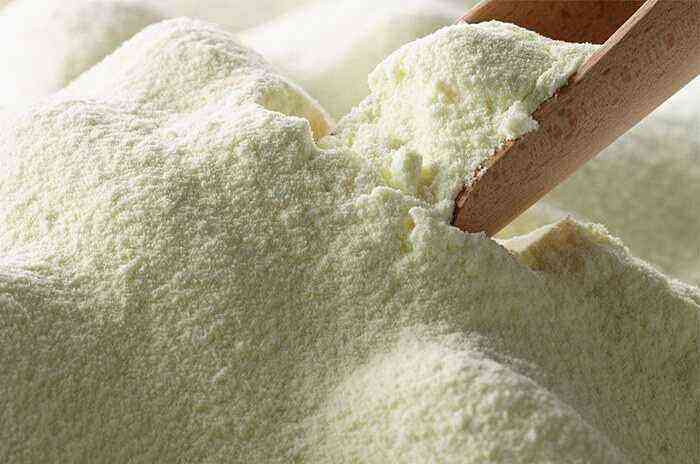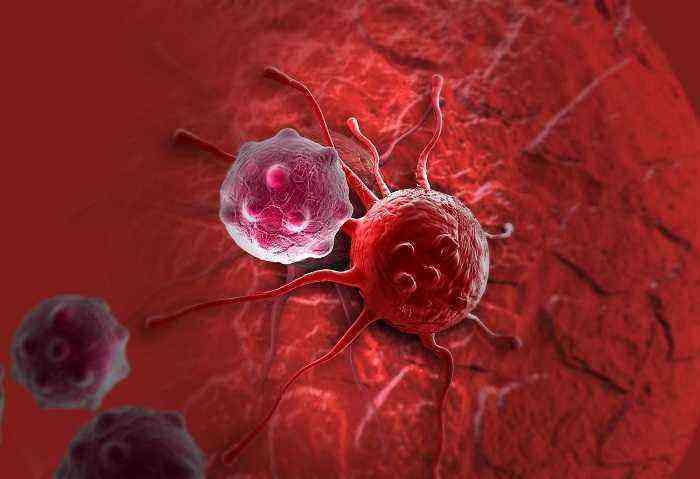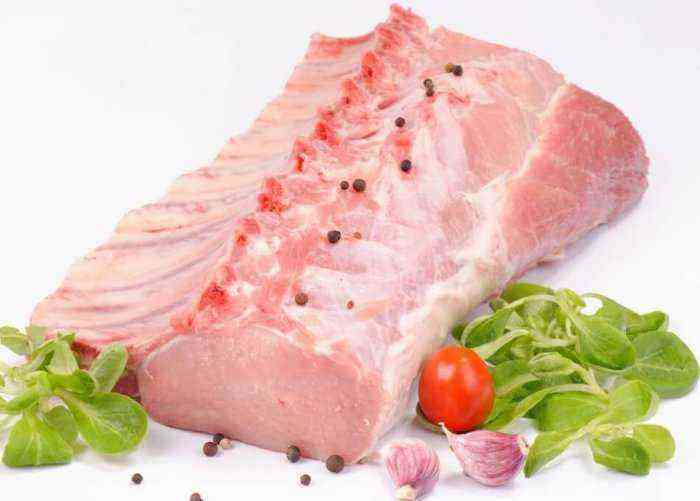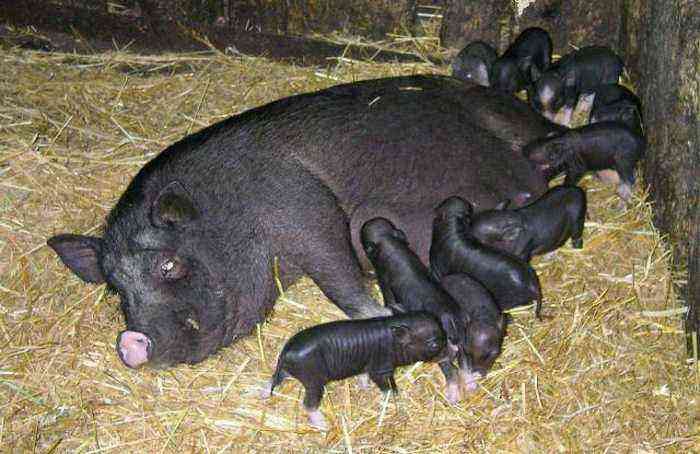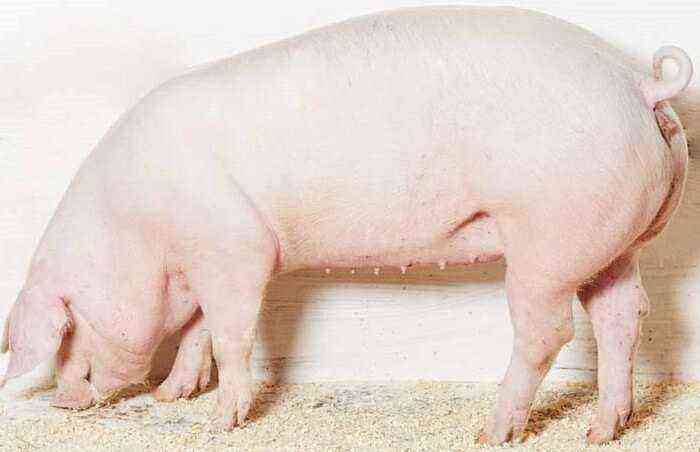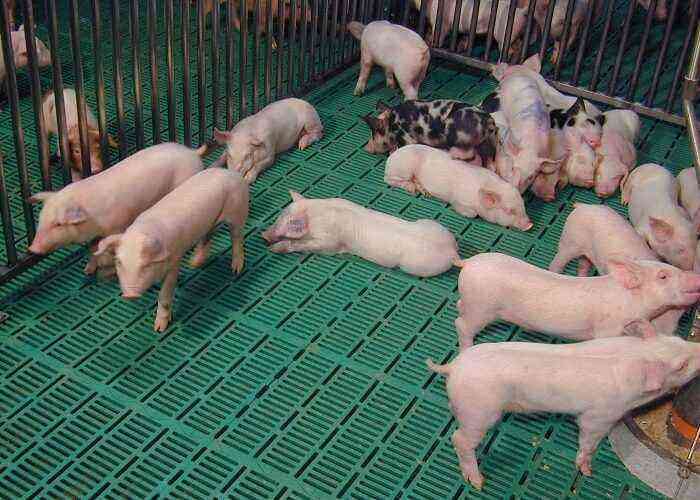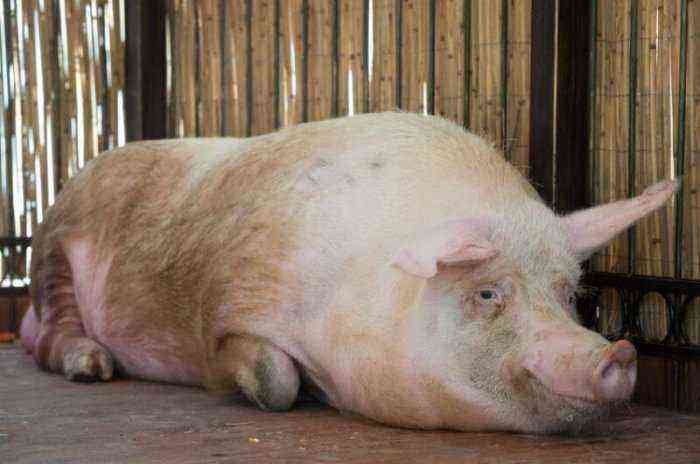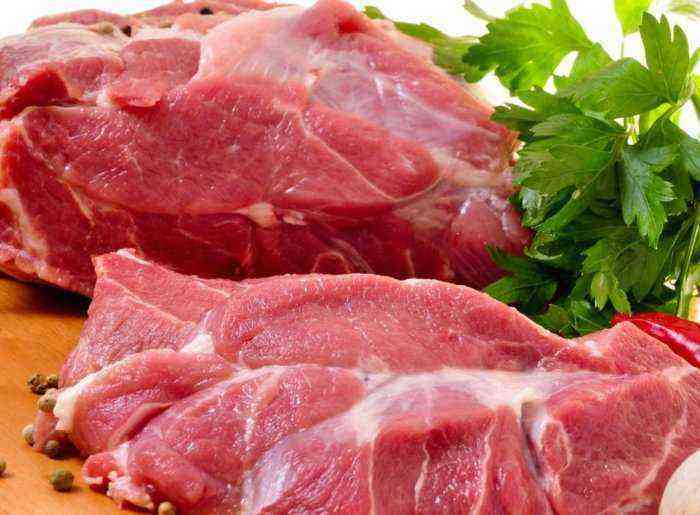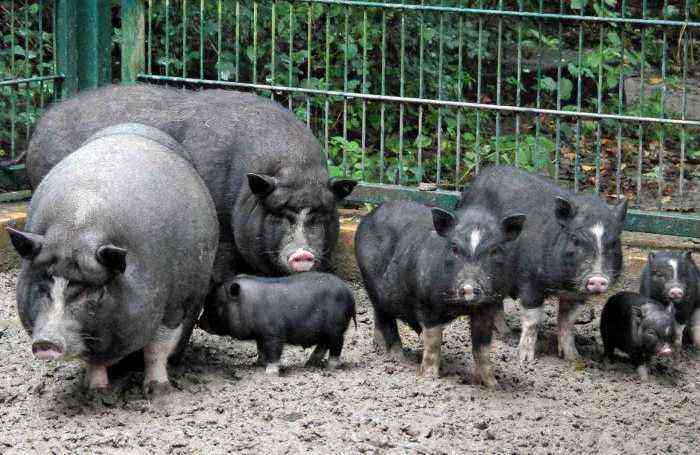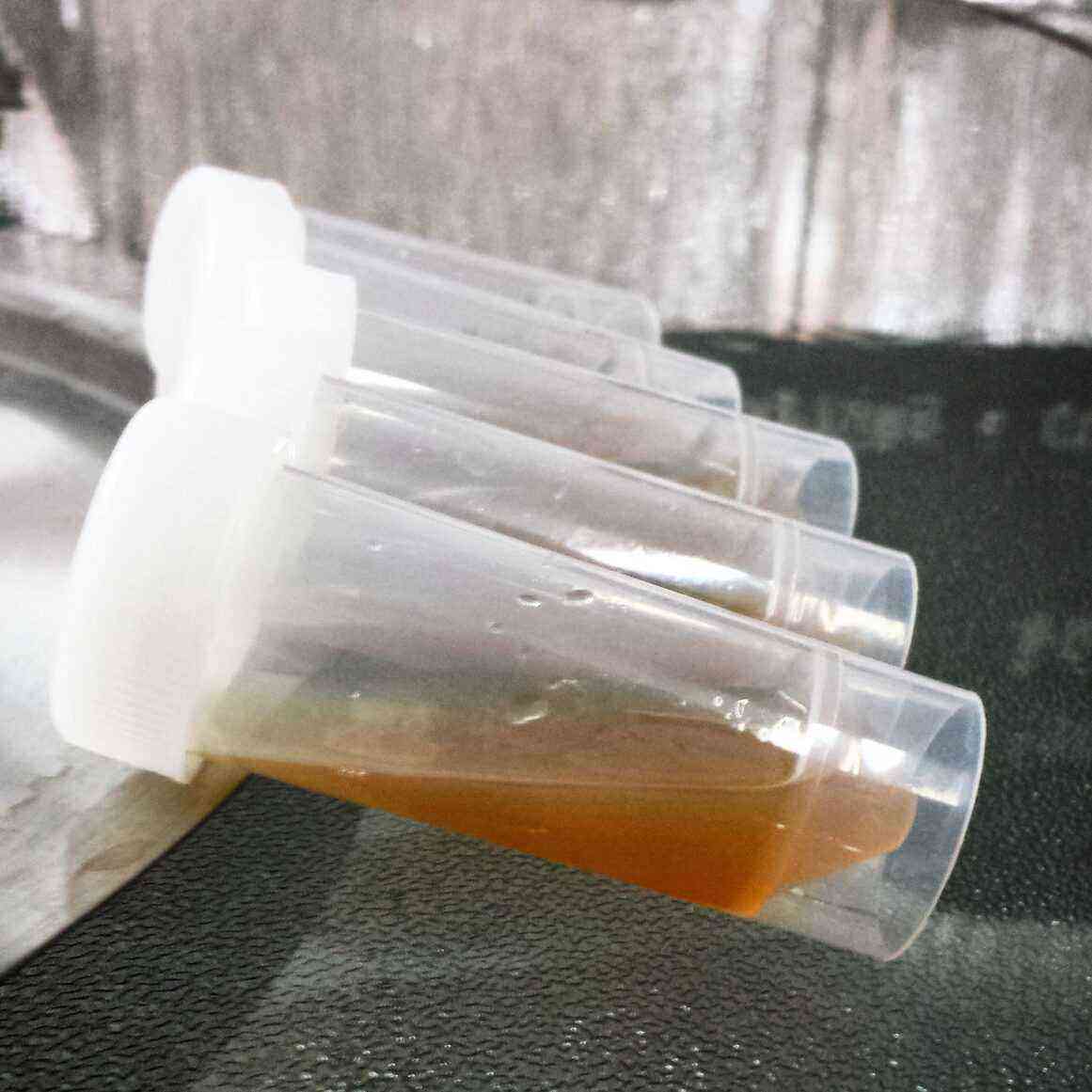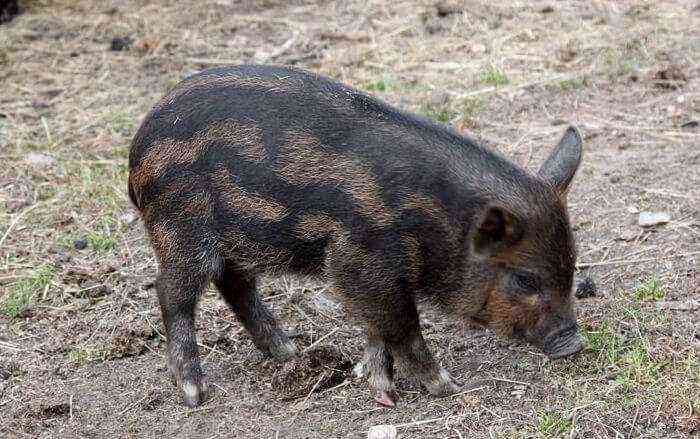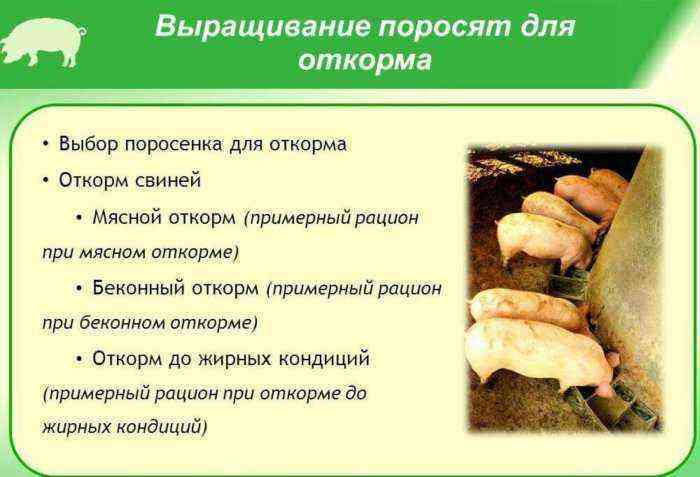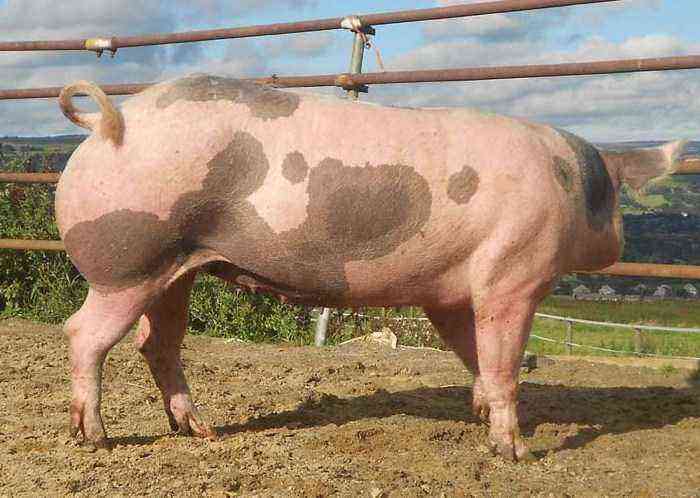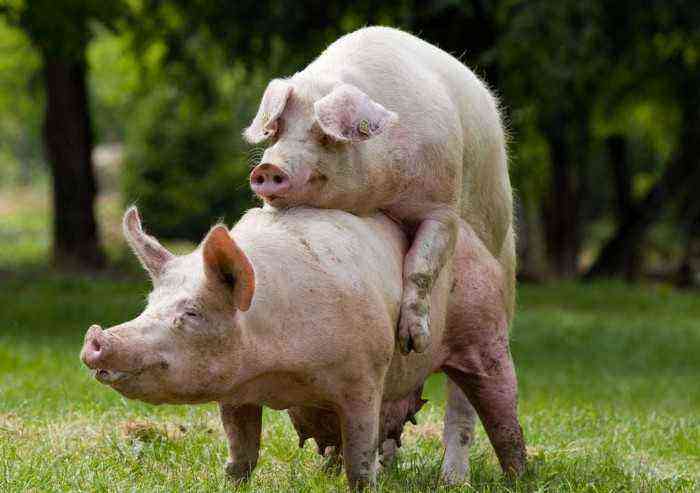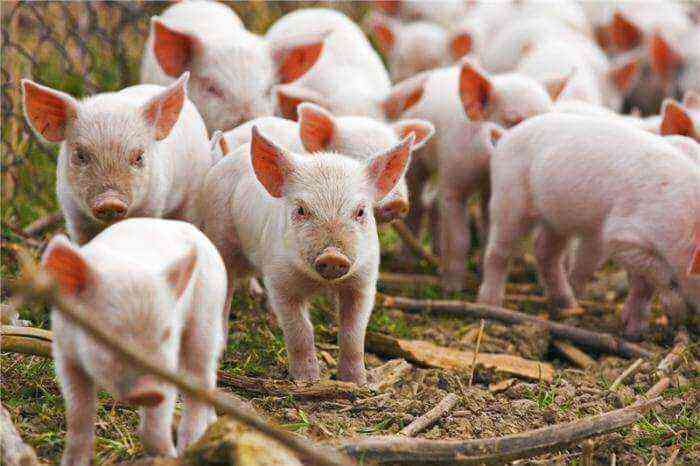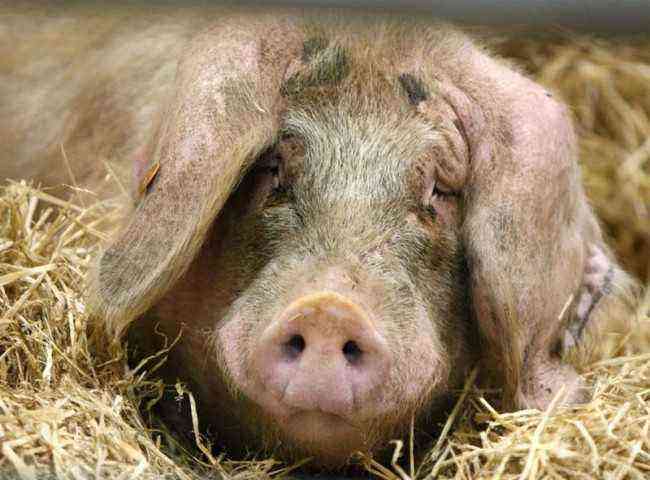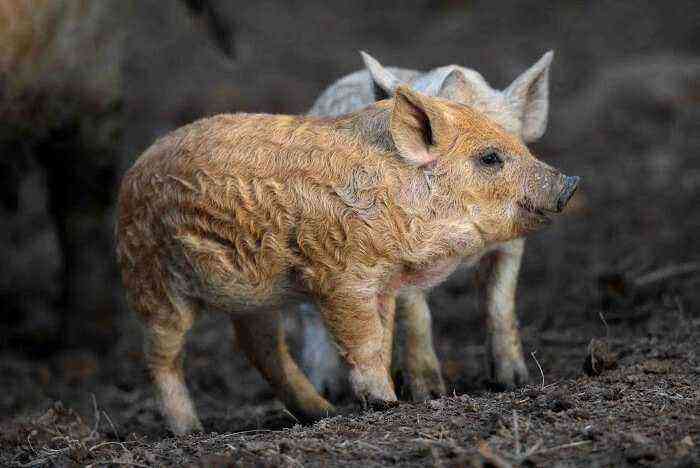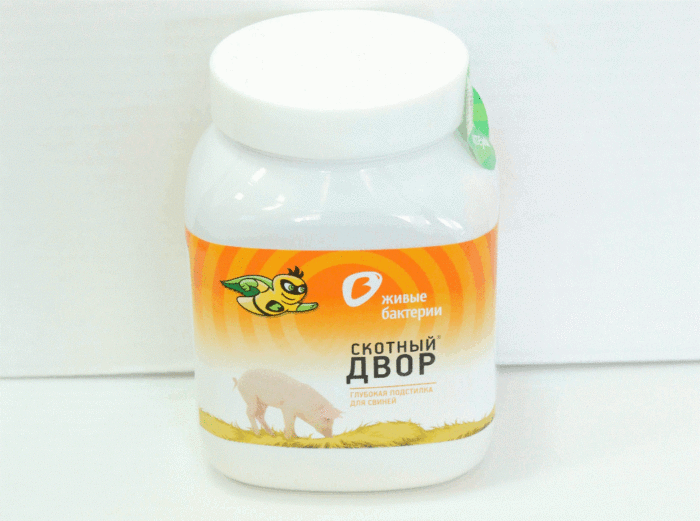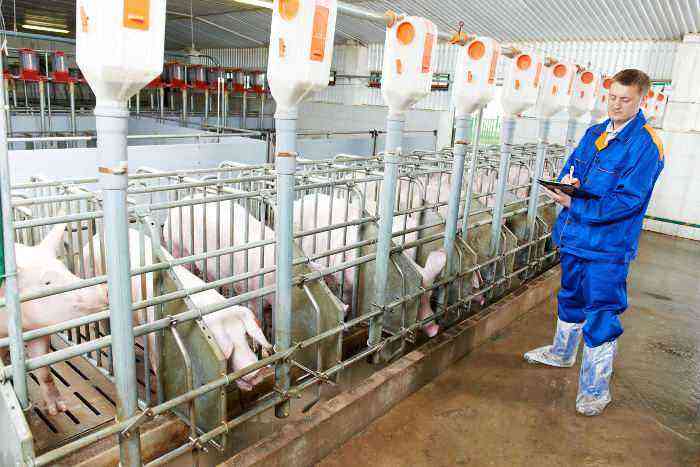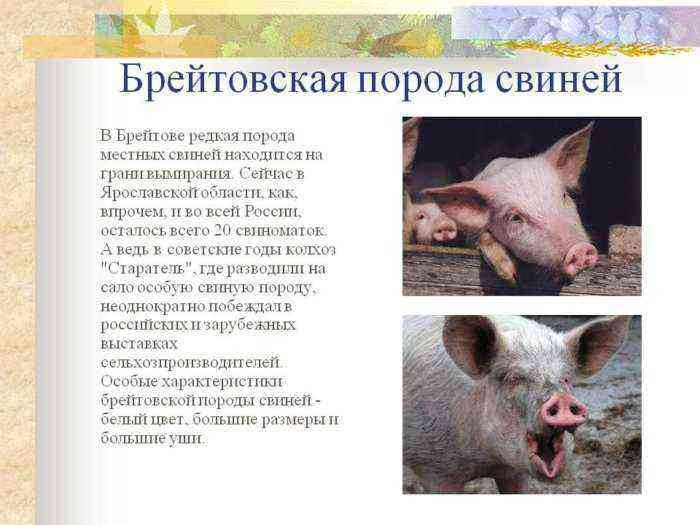When piglets do not eat well, they slowly gain weight, and this is reflected in the profit of the farm. If the owner of the animals notices that there is food left in the feeder for two hours, this is a cause for concern. Lack of appetite in pigs is an alarming sign indicating some kind of pathology. It is necessary to find the reason why the piglets eat little, and eliminate it.
Pigs don’t eat much
Causes
There are many reasons why there is a decrease in appetite in pigs. These include more than just animal health issues. Often, farmers themselves, unaware of this, have a hand in the lack of weight of piglets. For example, if they keep them in poor conditions or make mistakes in catering. Consider the main reasons why the piglet does not eat:
- Wrong diet.
- Lack of vitamins.
- Worms.
- Bad conditions.
- Congenital pathologies.
- Diseases.
It is worth dwelling on each reason separately in order to understand how to change the situation, improve the appetite of piglets.
Wrong diet
An improperly organized diet often causes intestinal disorders in piglets and loss of appetite. The delicate digestive system is unable to digest only dry and roughage, and many farmers feed their young with just such food. The younger generation should not be given hot or too cold food, and the food must be thoroughly chopped before serving. In addition, piglets react sharply to sudden changes in diet. They may begin indigestion, develop gastroenteritis with malnutrition.
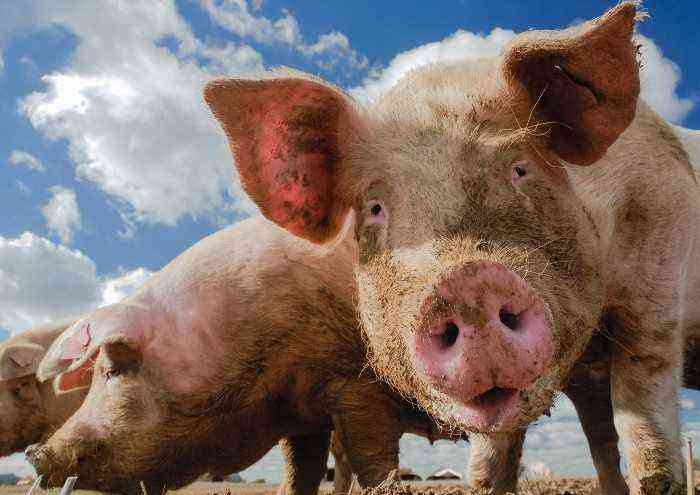
Gastroenteritis
Loss of appetite is often associated with a monotonous menu. Pigs love delicious food – salty, bitter, sweet, sour, and they quickly get bored with the same taste. To constantly maintain appetite, it is necessary to periodically change flavoring additives, then the piglets will always eat with pleasure.. Individuals that have recently been taken away from the sow are a separate topic for conversation. They are under a lot of stress, so farmers have to indulge in tricks to increase their interest in solid food. Experienced livestock breeders introduce fragrant oils into the diet of sows in advance, which after weaning are added to piglets’ food. The smell and taste that the food has, in babies, is associated with the aroma and taste of mother’s milk, they are more willing to eat new food.
Lack of vitamins
Due to the lack of vitamins in the body of pigs, processes occur that entail various pathologies. Avitaminosis leads to:
- violation of metabolic processes;
- reduced immunity;
- the development of diseases.
Most often, pigs suffer from a lack of vitamins B, D, A, E and PP. The lack of these substances in the body leads to various symptoms, but almost always among them there is a loss of appetite. Pigs eat poorly, become lethargic, gradually lose weight. Along with these manifestations, there are others that are characteristic of each type of vitamin deficiency. For example, with a lack of vitamin D, piglets have convulsions, unsteady gait, and bones begin to deform over time.
A lack of vitamin PP causes pellagra disease, in which the skin of piglets becomes dry, flaky, covered with a rash, and then with ulcers. If the body of animals lacks B vitamins, hyperexcitability, spasms, paralysis and other unpleasant symptoms are observed.
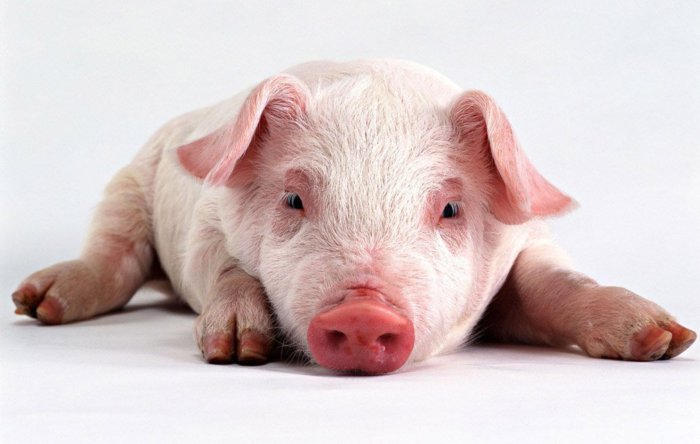
Pig paralysis
The solution to the problem with any type of beriberi is the introduction into the diet of foods that contain the missing elements in excess. Sometimes a simple change in the menu is not enough, emergency assistance is required, then the animals are given vitamins by injection.
Worms
Pigs infected with helminthic infestation always eat poorly. Loss of appetite in this case is associated with intoxication of the body, because parasitic worms secrete waste products into the body of the animal, poisoning it. What worms do pigs have?
- Roundworms.
- Tape worms.
- Nematodes.
- Trematodes and others.
Some types of worms can be detected without laboratory testing, directly in the animal’s feces, while others cannot. It is important to periodically carry out preventive deworming of animals, usually this is done twice a year. If there is a suspicion of infection with worms, it is necessary to take the pig’s feces to the laboratory for diagnosis. A sick animal is treated with anthelmintic drugs.
Poor conditions
Pigs react sharply to unsuitable conditions for them:
- To heat or cold.
- High or low humidity.
- Air pollution.
- Boring content.
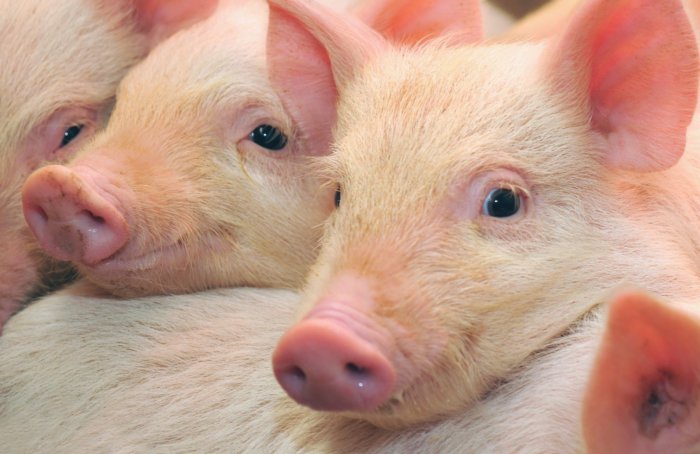
Crowded content
For pigs to eat well, they must be comfortable. It is worth taking care that the pigsty is ventilated, but at the same time there should not be a draft there. It is unacceptable that harmful gases accumulate inside – ammonia vapor and hydrogen sulfide. The optimum temperature in the pigsty ranges from 18-20 degrees.
Attention! Newborn piglets are kept at a temperature of about 30 degrees.
Experienced farmers are advised to make sure that the young can have fun – run and play. When piglets are deprived of this opportunity, they experience stress and do not eat well.
Congenital pathologies
Congenital pathologies include malocclusion. Even if the piglet is healthy and shows good promise, but its teeth structure does not meet the standards, it will not be able to eat normally, which means it will lag behind in growth and development. You can check the teeth of a pig like this – firmly fix the head and limbs of the animal, spread its lips with your fingers. If the upper and lower teeth are in one line, this is good. When the lower jaw protrudes forward by 5 mm or more, this is already a pathology.
Piglets born from a sow and a boar, which are related, can be with a variety of health pathologies. Often they lag behind in development and eat poorly. They may have diseases that appear later, such as defects in the digestive organs or the cardiovascular system. That is why you need to buy piglets only in nurseries or from trusted farmers.
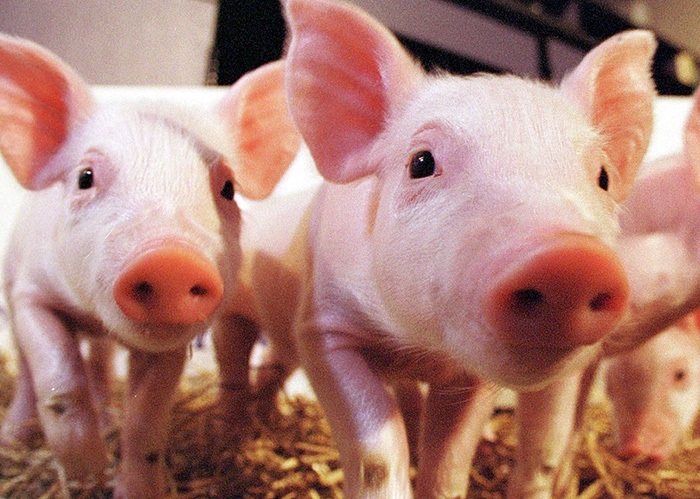
You need to buy piglets only in nurseries
Stress
Pigs are sensitive animals. Some circumstances cause stress in them, because of the unstable emotional state, the animals lose their appetite. Consider them:
- Transportation.
- Regroup, change stall.
- Weaning from mother.
- veterinary procedures.
- Discomfort under improper conditions of detention, etc.
Attention! Prolonged stressful situations can lead to irreversible processes in the body of the pig and the death of the animal.
Diseases and their symptoms
A sharp loss of appetite is an alarming signal, most often it is a sign of a disease. Animals may suffer from:
- infectious diseases.
- Non-contagious ailments.
- Diseases associated with impaired metabolic processes.
Consider the most common diseases of pigs:
- Gastroenteritis.
- Bronchopneumonia.
- Anemia.
- Rickets.
- Plague.
- Paratif.
- Foot and mouth disease.

Foot and mouth disease
Gastroenteritis. Its cause is the errors made by the farmer in the nutrition of young animals. The disease is acute, the appetite disappears, diarrhea and vomiting begin, and the body temperature of the piglets decreases.
Bronchopneumonia. This is a non-contagious disease, an inflammatory process that affects the bronchi and lungs of piglets. Occurs when animals are kept improperly – in cold, damp, without bedding. With bronchopneumonia, piglets do not eat well, they are weak, cough, mucus is secreted from the nose, and the temperature rises.
Anemia. The lack of iron in the blood of an animal is called anemia or anemia. The main manifestations are white feces, pale skin, dull bristles, exhaustion, weakness, loss of appetite.
Rickets. This disease develops due to a violation of calcium-phosphorus metabolism against the background of avitaminosis D. It is manifested by loss of appetite, convulsions, deformation of bone tissue.
Plague. A very dangerous disease of viral etiology. Animals become infected with it from sick individuals, through inventory, food. The disease is acute, the temperature rises sharply, there is no interest in food, severe weakness, the appearance of characteristic spots on the skin.
Paratyphoid. An infectious disease manifested by a sharp increase in temperature, refusal of food, weakness, vomiting, shortness of breath, diarrhea, eye damage. Animals become infected from sick individuals and carriers of the bacteria, and suckling pigs from a sow.
Foot and mouth disease. This ailment is also contagious, but it is caused by a virus. FMD is characterized by the following symptoms – a sharp development of the disease, high fever, loss of appetite, ulceration on the oral mucosa. Unfortunately, this infection poses a mortal danger to young animals.
If the pig does not eat well, you need to immediately find the cause. When the loss of appetite is due to illness, the farmer may find accompanying symptoms that can help determine the true reason for not eating. If the piglet seems healthy, then you need to move in a different direction. Perhaps he does not fit the conditions of detention, diet, or he is under stress.
